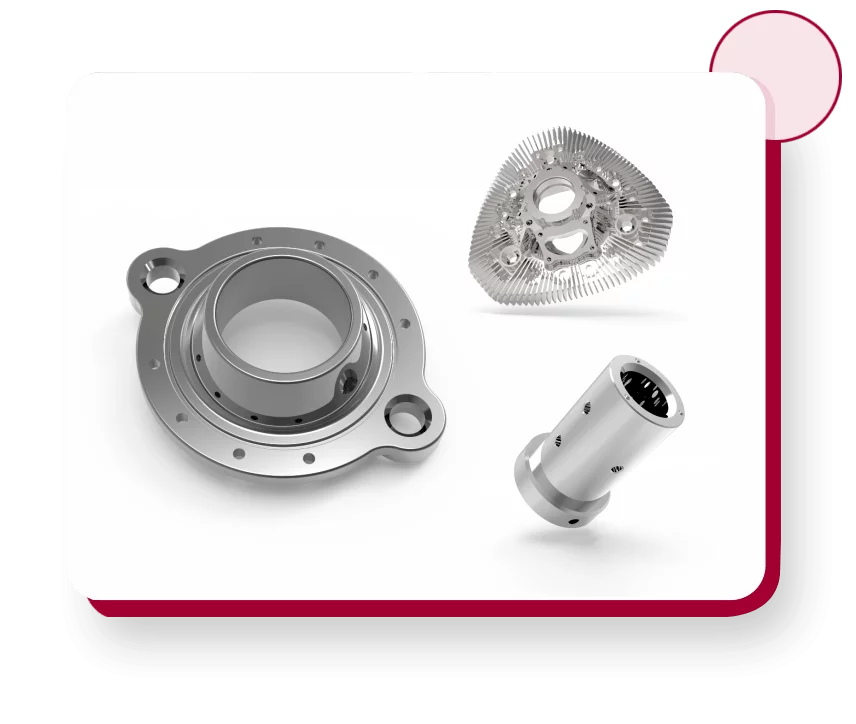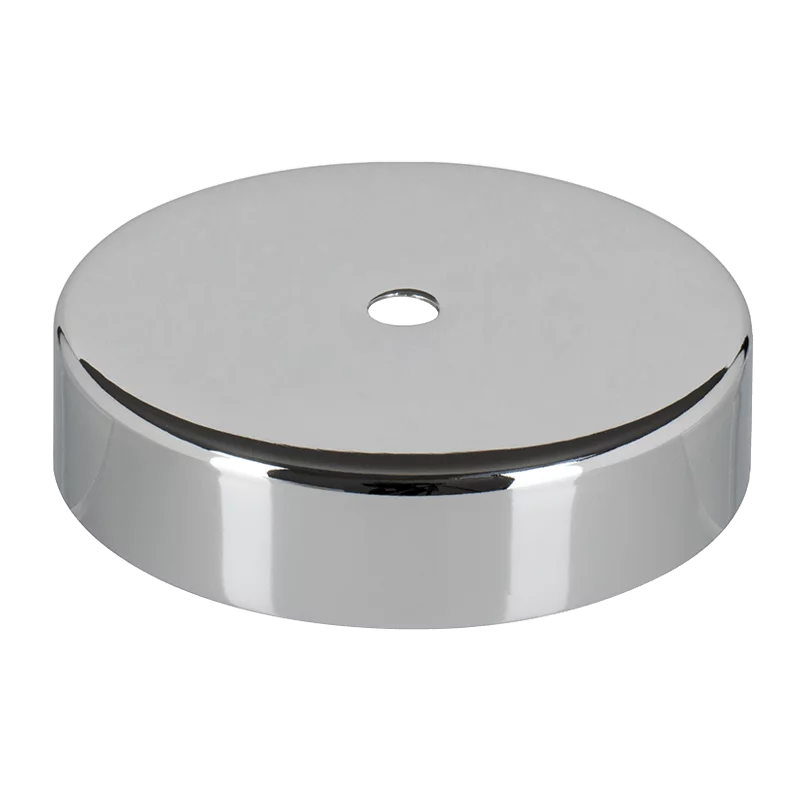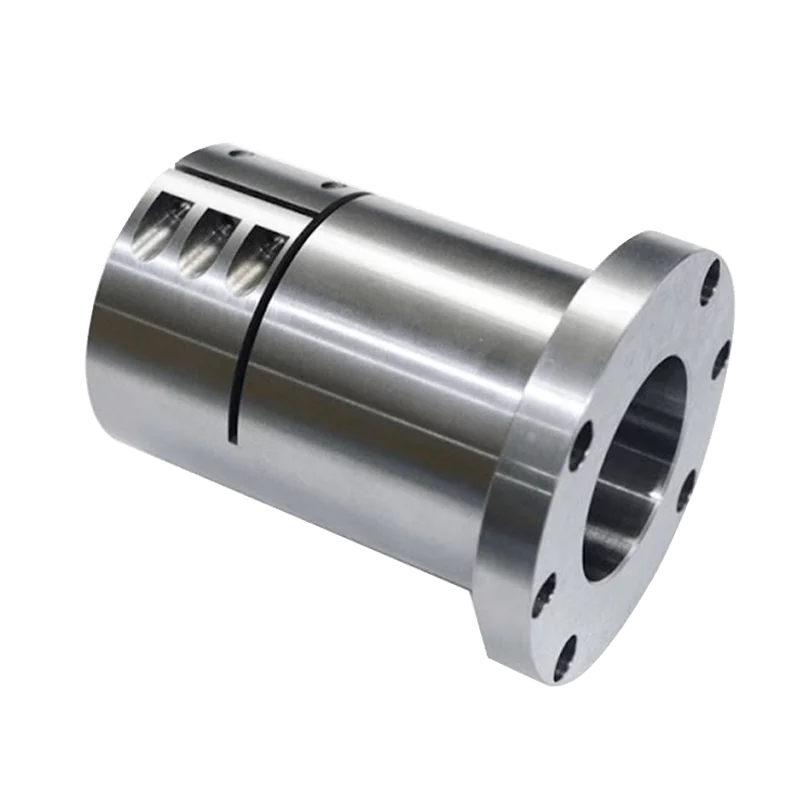Stainless Steel

As an alloy of iron, stainless steel is a corrosion-resistant metal used in a variety of industrial applications. From energy and transportation to construction, research, medicine, and food manufacturing, stainless steel can be found everywhere.
CNC Stainless Steel
As an alloy of iron, stainless steel is a corrosion-resistant metal used in a variety of industrial applications. From energy and transportation to construction, research, medicine, and food manufacturing, CNC stainless steel products can be found everywhere.

Stainless Steel Type
In daily life, a variety of industries can see CNC stainless steel parts, commonly used stainless steel austenitic stainless steel, martensitic stainless steel, and tool steel

Austenitic Stainless Steels
Frequently used, high chromium content (higher corrosion resistance), non-magnetic

Martensitic Stainless Steels
Can be hardened through cold working, and is less expensive because of reduced nickel content

Tool Stainless Steels
The least common stainless steel to be used, The hardness is higher after quenching

Introduction
Stainless steel is considered a green material for its ability to be recycled and reused. It is also environmentally neutral and inert and does not leach compounds when it comes in contact with elements like water. In addition to its environmental benefits, stainless steel is also easy to maintain, aesthetically pleasing, and extremely hygienic.
Other characteristics of stainless steel include:
- Malleable
- Ductile
- High strength across a range of temperatures
- Generally, it is non-magnetic
Stainless Steel Subtypes
Subtypes are classified by series or by individual specifics. There are the 300 and 400 series, 15-5, 17-4 PH, and Nitronic 60, which are commonly used in CNC machining. The 300 series is one of the most common subtypes of stainless steel, whereas the 400 series is not used as much.
304 Stainless Steel
This austenitic stainless steel is used commonly in CNC machining. It has high corrosion resistance up to temperatures of 1500° F.
316 Stainless Steel
This stainless steel is austenitic and has the addition of molybdenum and nickel to give it higher corrosion resistance. Commonly used in marine grade or chemical processing applications, it is suited for harsh environments.
420 Stainless Steel
This stainless steel is martensitic, and when hardened, its tensile strength increases, which makes it more impact-resistant. It has good resistance to mild acids, water, food compounds, and some alkalis. Often it is used in cutlery.
430 Stainless Steel
As ferritic stainless steel, 430 is not as strong as the 300 series listed above, but it is still used for many heavy-duty applications. It also has good resistance to nitric acid.
434 Stainless Steel
This ferritic stainless steel is a stronger alternative to 430 and better for high-temperature applications than 316. Compared to 430, 434 has better pitting resistance.
15-5 Stainless Steel
This stainless steel is martensitic and is tougher than 17-4, with better corrosion resistance than other martensitic grades.
17-4 PH Stainless Steel
The PH stands for precipitation hardened, which increases yield strength. This martensitic stainless steel has high strength and corrosion-resistant abilities. It is heat treatable to a hardness of about Rockwell C50, and it is magnetic.
Nitronic 60
Nitronic is austenitic and strengthened by nitrogen. It is resistant to water and galling, and it has better corrosion resistance than 304 and better pitting resistance than 316. Often used for valve stems, pins, bushings, or fasteners.
Manufacturability and Design
Recommendations for CNC Machining
All stainless steel grades are high in strength yet vary in hardness, machinability, and cost. For example, 304 stainless steel has a medium hardness, is easier to cut, and has a lower cost. In contrast, 303 stainless steel has a high hardness and good machinability but costs more.
Tolerance
A standard tolerance should produce (+/-) 125 µm, and an achievable tolerance should be (+/-) 100 µm / (+/-) 50 µm
Wall Thickness
A minimum wall thickness for machined parts should be at least 0.8 mm for metals like stainless steel. For better strength, 2 mm is suggested for rigid walls, 2.5 mm.
Cavity and Pocket Depth
A pocket or cavity depth should be three times their diameter. Limiting depth will help to ensure good results.
Engraving
Between engraving and embossing, engraving is preferred. To acquire clear and legible text, consider Arial or Verdana fonts, size 20 or larger, 5 mm engraved. If possible, design letter strands with at least a 2mm width.
Internal Radii
The internal radii minimum that is possible is 1 mm. Generally, internal radii dimensions will depend on the milled pocket depth.
Holes
Thread size should be a minimum of M2, with recommended being M6 or larger. As for thread length, the minimum is 1.5 x nominal diameter. Recommended is 3 x nominal diameter.
Threads
The PH stands for precipitation hardened, which increases yield strength. This martensitic stainless steel has high strength and corrosion-resistant abilities. It is heat treatable to a hardness of about Rockwell C50, and it is magnetic.
Rules of thumb to keep in mind are:
- Design parts with the largest tool
- Limit the depth of cavities or pockets to three times their width, When larger depths are needed, design with variable cavity depth in mind
- Be sure to align the main features of the design with the six principal directions or a 5-axis CNC machine

